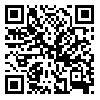BibTeX | RIS | EndNote | Medlars | ProCite | Reference Manager | RefWorks
Send citation to:
URL: http://jsmt.khu.ac.ir/article-1-208-en.html
The aim of this study was to compare the profile of anthropometric, somatotype and body composition between novice and professional 6 to 8 years old gymnasts. A total of 40 gymnasts in tow group (20 novice gymnasts and 20 professional gymnasts) participated in this study. A total of 17 anthropometric, somatotype and body composition variables were recorded of each subject. The tools used in this study are: questionnaires (individual information and general health evaluation), chronometer, band meter, and movable weight scale, stadiometer, sliding calliper and somatotype software. In ferential and descriptive statistics and independent T test were used to analyze the obtained data. The level of significance was 0.05. There were significant differences in skinfold percentage (triceps, Supraspinatus and calf), total hand length, hip and calf, circumferences, BMI, endomorph and ectomorph between tow group) p<0.05). From an anthropometric stand point, 6 to 8 years old is a lowest and best age for select and talent identification. According to the results, between two groups, professional gymnasts exhibited lower BMI, circumferences (hip and calf), skinfolds, endomorphy and more total hand length, mesomorphy and ectomorphy than nivice gymnasts. On average, professional and novice gymnasts were in ectomorph-mesomorph and endomorph-mesomorph status respectively.
Received: 2012/11/18 | Accepted: 2013/11/26 | Published: 2017/08/23
| Rights and permissions | |
 |
This work is licensed under a Creative Commons Attribution-NonCommercial 4.0 International License. |






